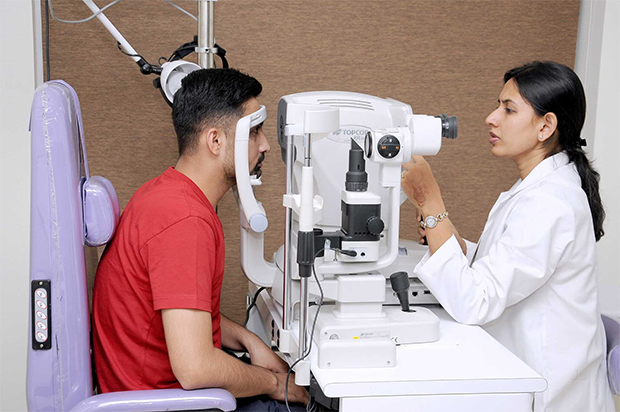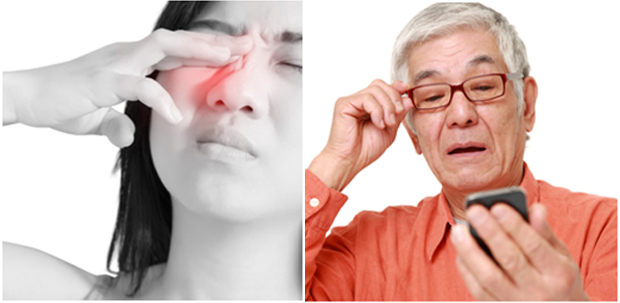|
Preventive Eye Care and Eye Examinations Are
Important
Just as with annual physical examinations, it's equally important to
have regular eye examinations. An annual eye examination is appropriate
for most people.
If you have glaucoma, macular degeneration, diabetic retinopathy, or a
family history of eye diseases or disorders, regular monitoring and more
frequent visits may be required.
|
|
 |
|
It's important to discuss your health care situation with your primary
care doctor and your eye doctor and make sure you follow his or her
advice about ongoing appointments, medications, and/or treatments.
Prevention is an important component of eye care.
Some eye conditions and diseases are hereditary and family members may
need to be monitored regularly by a general physician and an
ophthalmologist or optometrist.
Signs and Symptoms of Possible Vision Problems
If you experience any of the following eye changes, schedule an
appointment with your ophthalmologist or optometrist immediately, even
if you've been to your eye doctor recently:
|
|

|
|
Severe, sudden eye pain
Recurrent pain in or around the eye
Hazy, blurred, or double vision
Seeing flashes of light or sudden bright floating spots
Seeing rainbows or halos around lights
Seeing floating "spider webs"
Seeing a "curtain coming down" over one eye
Sensing a "cup filling up with ink" in one eye
Unusual, even painful, sensitivity to light or glare
Swollen, red eyes
Changes in the color of the iris
White areas in the pupil of the eye
Sudden development of persistent floaters
Itching, burning, or a heavy discharge in the eyes
Any sudden change in vision
See also Normal Vision Changes to help you understand normal age-related
changes in the eyes and your vision.
Other Indicators of Possible Vision Problems
Other indications of possible vision problems may include problems with
the following daily living activities:
Moving Around
Having difficulty walking on irregular or bumpy surfaces
Walking or stepping hesitantly
Going up and down stairs slowly and cautiously
Shuffling the feet
Brushing against walls while walking
Missing objects by under-reaching or over-reaching
Everyday Activities
Discontinuing or doing certain activities differently such as reading,
watching television, driving, walking, or engaging in hobbies
Squinting or tilting the head to the side to focus on an object
Having difficulty identifying faces or objects
Having trouble locating personal objects, even in a familiar environment
Reaching out for objects in an uncertain manner
Having trouble identifying colors
Selecting clothing in unusual combinations of colors or patterns
|
|

|
|
Eating and Drinking
Having problems getting food onto a fork
Having difficulty cutting food or serving from a serving dish
Spilling food off the plate while eating
Pouring liquids over the top of a cup or drinking glass
Knocking over glasses while reaching across the table for another item
Reading and Writing
No longer reading mail, newspapers, or books
Holding reading material very close to the face or at an angle
Writing less clearly and having trouble writing on a line
Finding that lighting that was previously sufficient is now inadequate
for reading and other activities |